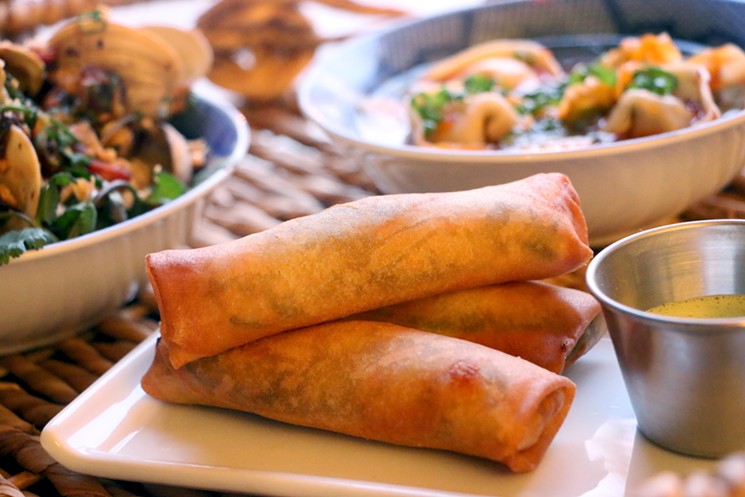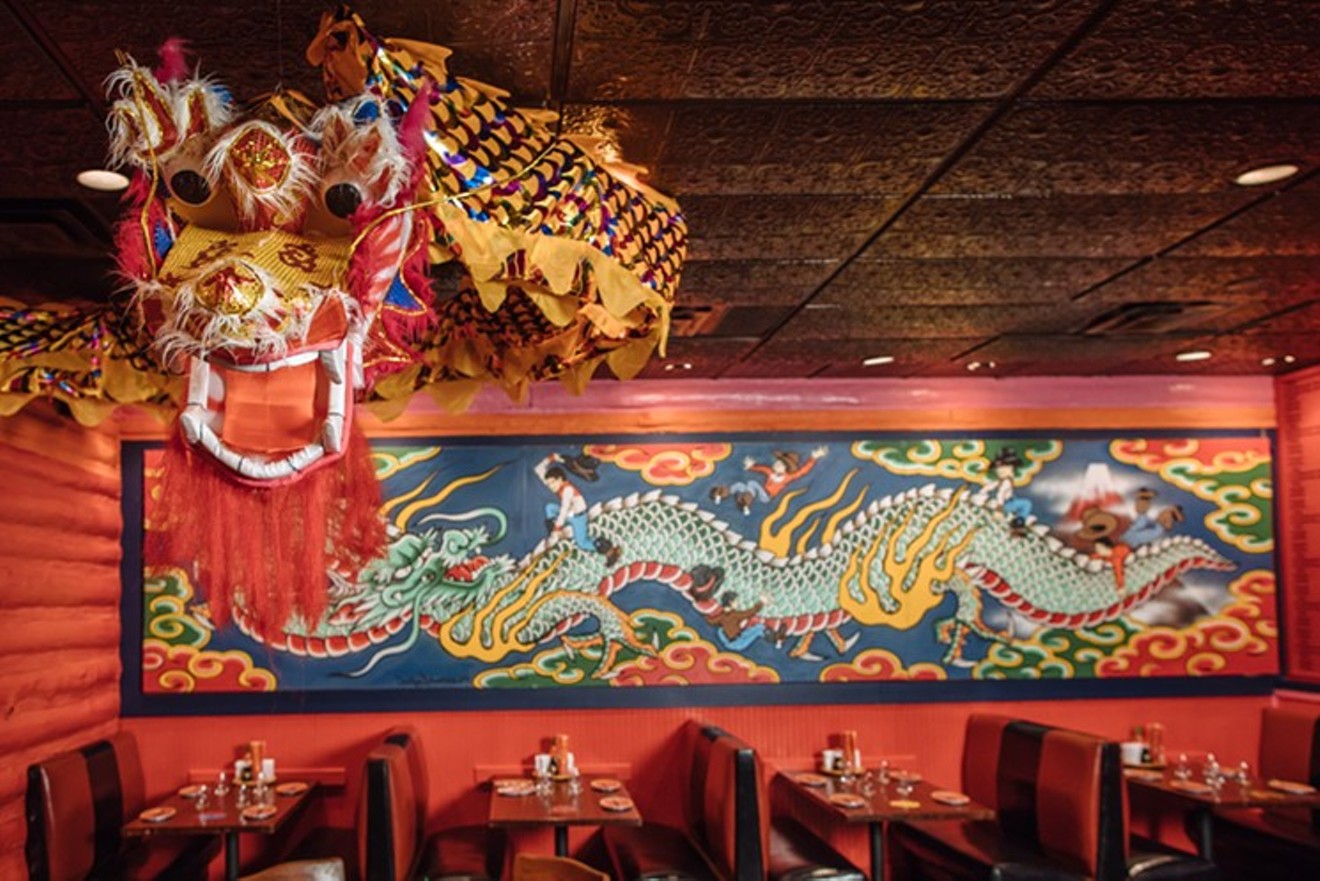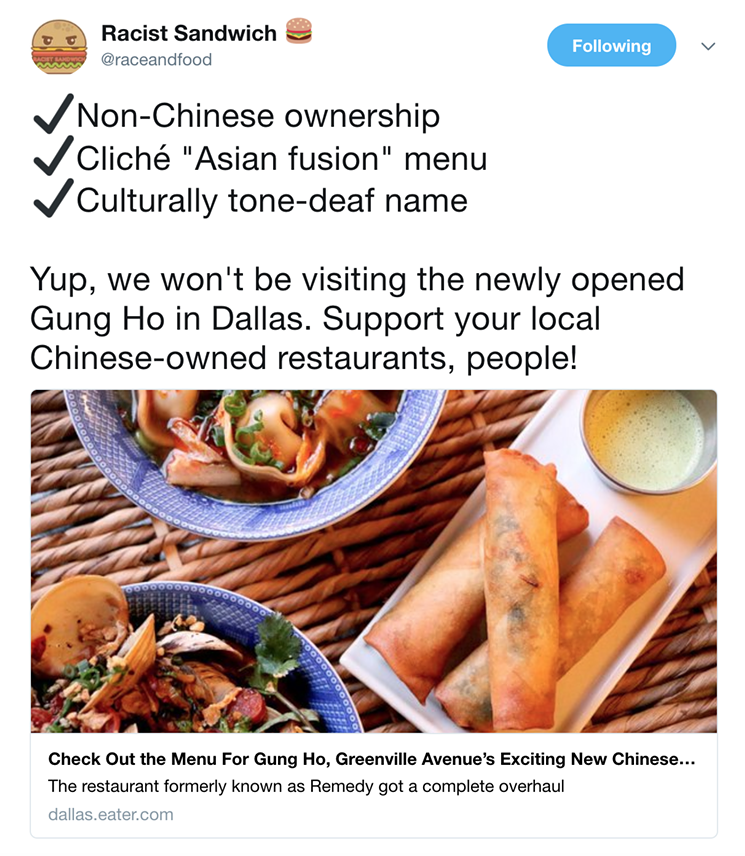But I won’t. Because I don’t trust you.
When we were kids, you grimaced at my Tupperware, called my noodles worms and wailed about the smell. As we got older, you sang your “ching chong changs” to me in the halls and accused me of eating dog. And then you called the restaurants of my childhood “ghetto” and unclean. You claimed the food was full of MSG and demanded the wait staff speak better English. You consumed dry lo mein and takeout orange chicken by the drunken college pound and giggled about how I probably ate this stuff every day. And so I stopped eating Chinese food in front of you because I just wanted to fit in.
Years and years later, now that we’re all a little older, and a little more read, you talk about eating Chinese food like it’s a newfound jewel and your gastronomical induction into the Zeitgeist. You tout the occasional dinner at the Chinese restaurant as an “authentic” experience with very little regard for the space you demand as you try to Instagram your bowls of rice posed deftly next to wooden chopsticks. And hey! Is it true that you actually know where to find the “best" dim sum in town?
And then, after traveling the world, you can’t contain all your irrepressible admiration for the foreign food and the “rich culture.” “Shanghai is so cool,” you say. “The food is amazing.” And it comes as a surprise to me to discover you now not only love to eat it, but you love to cook it too, and you’re even trying to open a restaurant.
But you don’t really cook it. Because you can’t. You’re not Chinese. You didn’t grow up eating this food; in fact, as I recall, you grew up gawking at it, clenching your nostrils and being completely repulsed at the sight. You didn’t have a Chinese mother, whom you watched sweat over steaming pots. You didn’t see, hear, feel and taste the world as a Chinese person. You are not Chinese. You are not Asian.
So you call it Asian-fusion or American-Chinese/Japanese/Korean/insert any non-Western culture, in the hopes of monetizing all that you’ve “learned abroad,” and convincing people with less adventurous taste that they, too, can be as cultured as you — as long as they pay $12 for your take on crab rangoon. And maybe you bring on your Asian friend to cover the bases and to punctuate this venture with even an ounce of authenticity. But they’re your silent partner; you’re the face, you’re the vision. You own this. It is yours.
And when I say “you,” I don’t mean “you-you”. I’m sure many of you do not own Asian-fusion restaurants. I'm speaking of the collective you — the society at large that shamed Asian cooking, made it distort itself and dilute itself for the collective palate and made it perfectly permissible to tease and bully our foreignness as children, but then take and profit off of it as adults.
So I ask you, why do you want to own this? That’s a question I hope you ask yourselves on more than one occasion, and I hope you dig deep because the answer may not rise to the surface naturally. Do you want to own this because you “appreciate” and “admire” it? That’s often the first tier, and if that’s really the case, why not do exactly that? Appreciate it. Patronize actual Chinese restaurants, leave sparkling reviews and continue to give your dollars to the owners and cooks who’ve made this food for generations. The idea that opening a restaurant to showcase your ability to slather Hoisin sauce on nontraditional conduits is how one would appreciate Asian cuisine feels absurd. Appreciation is an act of respect. It is no longer an act of respect when you begin demanding your own share, and when you do so with the unparalleled brute strength of white marketing, white media savvy and white money — and when you do so with the kind of baseless understanding of Asian food that a few trips to the continent and culinary school could possibly teach you about cultures and traditions that date back centuries.Patronize actual Chinese restaurants, leave sparkling reviews and continue to give your dollars to the owners and cooks who’ve made this food for generations.
tweet this
You can’t jam together a chicken dumpling, satay skewers, Japanese furikake and coconut fried rice on to a single menu and call it Chinese-American any more than the Cheesecake Factory can all itself an innovative modern American restaurant. What peeves me about this kind of Asian-fusion is that it’s a lazy, paint-by-numbers approach to complex cuisine. “Ah yes, Taiwanese beef noodle soup here, a little bonito here, some shrimp fried rice over here and Gochujang there, and voila!” Asian-fusion. It showcases a range of basic knowledge of Asian condiments, but it also showcases the capacity to walk down any aisle of an H-Mart.
***
The next question to ask: What are you contributing? And who ultimately suffers at your expense? I don’t dislike all Asian-fusion food, I just loathe the kind that doesn’t care. I’m naturally skeptical, and I wonder what the intent is. Are you doing justice to this food or are you just capitalizing off the hype? Given all of what I’ve expressed above, I’m going to venture that the real reason, the reason you can’t bear to admit, is actually the latter — with an added pinch of ego-stroking and in some instances, racial insensitivity.
There’s the ludicrously tasteless “Misohawni” Asian-fusion shop in Johannesburg, South Africa — a name for which the two white owners have had to apologize profusely. The restaurant is riffing off of the “me so horny” line in Full Metal Jacket, said by a Vietnamese sex worker. It’s funny, right? Take a joke! But really, the line has since been used to propagate harmful stereotypes about Asian women and to perpetuate their sexual objectification. And the menu, in no surprise, is a disjointed, ill-informed trio of Japanese ramen, Korean barbecue and Hawaiian poke. Bamboozle, in New Zealand, is another problematic hellscape, which serves up uninspired dishes like “Chirri Garrick and Prawn Dumpring,” “Yummi Mami Sarad,” and (here’s the kicker) “Luff U’long Time Phat Thai.” If it sounds like a totally juvenile, racist jab at Asian accents, it’s because it is. Bamboozle, like Misohawni, wants to capitalize on Asian food while mocking, disrespecting and exploiting its creators. We’re not a gimmick, we’re not a punchline, and we’re not children you can tease in the cafeteria. The fact that both of these restaurants have made it this far past conception, that no one was able to shut these ideas down, is a bold slap in the face and a painful reminder that in fact, maybe we still are.
On a local level, the example I think of immediately is Hot Joy, which the Observer described as “a clueless white-dude fantasy in which Asian identity and cuisine are reduced to a string of ironic clichés.” The Asian-fusion (or what some will call Pan-Asian) restaurant, which shuttered its Dallas location in less than three months (but is still going strong in San Antonio), not only tried to pass off cheeseburger eggrolls, pastrami dumplings and an unfocused mish-mash of pad Thai and ramen as Asian food, it did so under a roof of Asian caricatures and fetishes. What does a menu like that contribute? Was there some unquenchable demand for stuffing an American blue-plate special into a wonton wrapper that I missed? It wasn’t innovative, and it didn’t taste good. It was a sloppy attempt at thrusting two opposing forces together for wow factor, and it didn’t wow. Then there was Hot Joy’s Filipino fried rice made with sisig, which is a traditional Filipino pork dish. On its face, it doesn’t seem terribly wrong. But how would Hot Joy have executed this dish in a way that contributed to food innovation? It couldn’t. So instead, it stole the principles of a traditional Filipino food without any of the heart and the soul, and in doing so, validated steering customers away from an actual Filipino-owned restaurant.
And that’s also why I’m unsettled by Dallas’ new Chinese-American eatery Gung Ho. The name, like so many if its cohorts, is tone-deaf at best. The term “gung ho” is derived from the Chinese language, but it entered the American lexicon as a battle cry of our armed forces and has trickled down through the generations to mean something entirely different. But it sounds vaguely Chinese, so let’s roll with it. People are genuinely excited about this restaurant, but it’s elicited nothing more than perturbed shrugs from a lot of Chinese-Americans like me. The menu is confusing. There’s $13 crab rangoon and a Taiwanese beef pozole, but then there’s also chicken fried rice and eggplant with fish sauce. Nothing about this menu is particularly outstanding, and a lot of it is just a coalescing of disparate identities that neither change the game nor satisfy a craving that my local Cantonese/Sichuanese restaurant couldn’t do better. But sell the mapo tofu with “pork and leek ragu” and the orange chicken with an “orange butter glaze” on trendy earthenware in a modern, well curated dining room with a full bar, and no one will suspect that those dishes are overpriced rip-offs. If Gung Ho wants to be the exciting new eatery it thinks it is, it needs to do much more than repurpose recipes.
So I ask again: what are you contributing, and who might you be hurting? I won't even delve into the deeply troubling nature of how we value and price “ethnic cuisine,” and how Asian-Fusion restaurants like the ones above skew the pay scale away from immigrant-owned and run restaurants.
But nothing caught my eye or wreaked of problematic cultural embezzlement more than the mission statement at the Honey Paw, an Asian-fusion restaurant in Portland, Maine, run entirely by a non-Asian staff, which unabashedly opines about being “unencumbered by any cultural allegiances.” So it’s not about the culture, after all then. You don’t appreciate the culture, and you’re not celebrating the culture; the culture (and all it embodies) is realistically an obstacle for your business — because you do not know it. The Honey Paw put on paper what so many Asian-fusion restaurants, run by non-Asians, won’t admit: that the first tier of their justification is actually bogus. Hot Joy felt called to the same misguided mission, to be cheeky rather than "authentic." And the ones who suffer most are the ones whose culture they feel no obligation or accountability to whatsoever. Food is a representation of its people — their history, geography, beauty, pain and triumph. When that context is not given the proper stage, we lose all of that, and in doing so, we devalue the people themselves.
Folding dumplings, for example, is a centuries-long tradition meant to celebrate and beckon wealth and good fortune. My mom used to fold dumplings with her friends for hours, and I acknowledged it as a sacred time that women shared with one another. When I was old and coordinated enough, mom would show me how to seal each one with just a drop of water and a swipe of my finger along the edge of the dough. Each dumpling tasted like a labor of love, and each one felt meaningful simply by virtue of being made with care and with reverence to our long-held traditions and superstitions. That all gets lost when dumplings are manipulated with ingredients that don’t make sense and are peddled and sold like a thoughtless commodity.
Gung Ho, Hot Joy, Fine China, Musume, the newly opened Alice — Are they doing enough to justify the genre?
***
Asian-fusion food can be done respectfully. I would be foolish to believe Asian-fusion had no place at all in America, but calling it Gung Ho or Misohawni probably isn’t the way to do it. In fact, so much of Asian food is already fusion. Granted, a lot of it is the product of colonialism and war (like Vietnamese banh mi and Korean fried chicken), but the Asian continent has been sharing amongst itself for ages, and places like Taiwan are examples of how a unique Asian identity can derive from several different ones and be greater than the sum of those parts.
Globalization, international travel and the internet have made food from afar feel closer than ever, and it’s natural that given enough time, that close proximity will influence how we cook. But there is a critical distinction with ideas like Eddie Huang’s fried Birdhouse Bao at Baohaus in New York, Roy Choi’s kimchi quesadillas and Kogi-style tacos in L.A., the soy ginger Korean-style chicken wings at Chicken Moto in Richardson and even the Skinny Bitch Salad at Crushcraft in Dallas. These are ideas created by Asian people, and these are restaurants owned and operated by Asian people.
These are foods that borrowed elements from multiple sources and created something exciting, something different. They didn’t piggyback on momentum, they built it from scratch with what they knew and loved about the cultures they inhabit — American and Chinese, Korean and Thai.
Why aren’t we supporting more Asian chefs? Why do we continue to invest in the ventures that either fall flat at best or outright insult at worst? How many incredible Asian chefs and Asian businesses have we bypassed for the likes of Hot Joy? How many Asian chefs who don’t quite have the media savvy or the American accent or the extensive culinary training are we leaving behind?

With dishes like wonton soup and egg rolls, the new Gung Ho restaurant on Lower Greenville touts itself as an American-Chinese restaurant.
Courtesy of Kathryn Kemp/Gung Ho
Ijeoma Oluo says it perfectly in her new book, So You Want to Talk About Race? There cannot be the kind of cultural exchange we want in a so-called “melting pot” without mutual respect. What makes places like Hot Joy and Gung Ho so difficult for me to get behind is how Asian food has been so easily and readily othered and ridiculed over the course of time. I’m not suggesting that the owners and the chefs at any of these restaurants were necessarily the same people who said my food smelled and called me a chink in high school, but it wouldn’t be unfathomable that the kind of racial, ethnic and cultural adversity so many of us have undergone could elude them. It isn’t unfathomable that despite Asian food being the trend du jour, it was not respected for much of its life in the U.S. It isn’t unfathomable that Asian-Americans have not gotten the respect they deserve, so sharing ourselves and trusting you with that gives us pause. As Oluo writes:
“That doesn’t seem fair on the surface, that we’d have to wait for a better world before we can start borrowing and adapting from other cultures with abandon. And it does not seem fair to those we feel that other cultures can take from white culture without the same risk of being labeled appropriative. But what actually is not fair, is the expectation that a dominant culture can just take and enjoy and profit from the beauty and art and creation of an oppressed culture, without taking on any of the pain and oppression people of that culture had to survive while creating it.”
I can’t tell you what to do. It’s not my place to set the limits, and living in an increasingly diverse country can make those boundaries even blurrier and more difficult to navigate, even beyond my own comprehension as a woman of color.
This isn't meant to make anyone feel bad. I’m hurt, and I’m hurt by something I didn’t think could possibly hurt me. Food is precious to me. My mother’s cooking is precious to me, and I hope you can sympathize with the little Chinese girl feeling so much shame about her Chinese lunch that she’d pretend she wasn’t hungry, that she’d carry that shame with her for years and that shame could become so much a part of her that being Chinese became something to fear and dread. I hope you can sympathize with how that little girl would feel to see the foods she loved but felt she had to shun could now belong to the very people who made her feel that way.
So many people I know — and many people I don’t — are that little girl.












